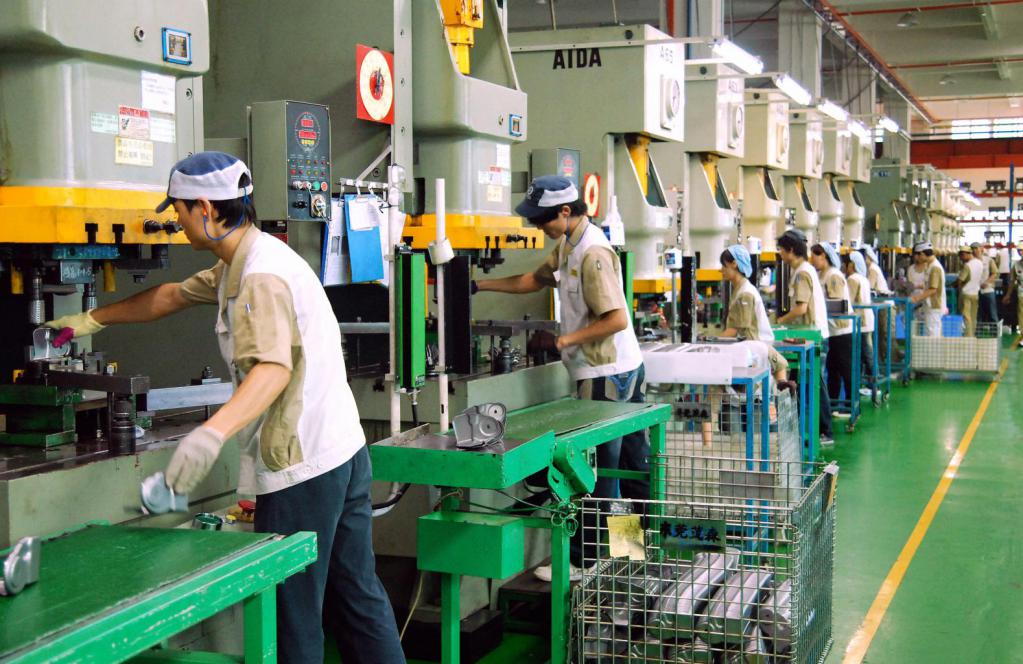Each person, when choosing a company where he will work, evaluates all the proposed conditions. At the same time, much attention is paid to wages. Most often, different firms use piecework payroll schemes. It is presented in different forms, and in some situations, progressive wages are most effective. This is a special type of payroll, in which prices depend on the fulfillment or overfulfillment of the plan.
System concept
Progressive remuneration is a special payroll scheme, in which, until the established norm is met, the labor of employees is estimated at direct piece rates, and if standards are exceeded, then higher tariffs are applied.
Normally, at enterprises, the norms are set within the actual values determined for the three months of the company's operation. The main goal of such a system is to increase labor productivity. Each employee is aware that the more work tasks they will be completed, the higher his salary will be.
Piece-wage progressive wages suggest that the same part made by an employee can be paid differently. Such actions motivate employees to work with a significant indicator of output.

The nuances of such a payment scheme
Progressive pay is a rather specific payroll scheme. Under it, the wage of a worker grows faster than the rate of output. This is a definite restriction on the use of the system everywhere in different enterprises.
The standard piece-progressive wage is used by companies for a limited period of time, not exceeding six months. It is considered effective for use in those areas of production where, for some reason, the established plan is not implemented. The reasons may include laziness of employees, lack of motivation, outdated equipment, low salary, or other factors. This adversely affects the performance of the entire manufacturing enterprise.
Progressive remuneration for a specific amount of work performed will motivate workers, so they will try to improve their performance to get a lot of money.
Under what conditions is a system effective?
It is advisable to use progressive pay systems under the following conditions:
- it is necessary to correctly establish the initial base from which the excess of the norm will be considered, since if it is too high, then employees will understand the futility of their own efforts, and if it is excessively low, this will lead to the absence of significant profit for the company due to the payment of high salaries;
- a special scale is being developed that will be understandable to all employees, on the basis of which wage rates will be raised;
- competent accounting of product development is carried out, and the time worked by each worker for a specific task is taken into account, which will guarantee the correct calculation of the percentage of the work performed, therefore progressive surcharges will be fair and effective not only for workers, but also for the company itself;
- the formation of an economic justification for the use of such a wage system, since it is important to make sure in advance that its application will not lead to an overspending of the salary fund, and also will not increase the cost of products.

Only if the above conditions are met, is it possible to achieve high efficiency by using this method of payroll. Therefore, before using it, economists and accounting employees of the enterprise must carefully analyze the situation, predict the results of the changes, and also draw up the necessary documentation.
Advantages and disadvantages
There are pros and cons of progressive pay, so before using it, you should study both positive and negative points.
| Benefits | disadvantages |
| Remuneration is closely related directly to the amount of products created by one employee. | Workers will try to produce goods as quickly as possible, which may adversely affect their quality. |
| The ability to significantly motivate employees, which directly affects the increase in labor productivity, which is a significant indicator in any enterprise | The rhythm of the production process established before the introduction of progressive remuneration at the enterprise is artificially violated |
| The turnover of working capital is accelerated and the number of products sold increases, which leads to higher net profit | The amount of funds paid to employees is increasing, therefore there is an overrun of the payroll |
| You can quickly unscrew bottlenecks in the enterprise | Often the introduction of such a system even leads to a violation of discipline and to a deterioration in the relationship between workers |
Thus, the use of such a payment method can result in both positive and negative consequences, therefore it is important to rationally evaluate the result. It is advisable to make a special forecast in advance by specialists.

When is it relevant to use?
Progressive pay is a rather specific payroll scheme, so it is not used too often. It is most effective for enterprises that specialize in mass production of a large number of different goods, parts or other small items. They should be easily identified using a standard description. They must have certain distinguishing features so that they cannot be confused with other products.
It is most optimal to use this system under the conditions:
- there is the opportunity at the enterprise to precisely determine all the quality criteria for the result of the work of each specialist, and it is also possible to calculate without difficulty how many products he made for a certain period of time;
- the company has an urgent need to increase production, and it is impossible to attract new workers, for example, received one large order from the state or a large commercial organization;
- a special accounting for the release of goods is formed in the company, which allows you to control the quality and quantity of manufactured products;
- on the part of the management team, a decision is made on strict control over the complexity, cost of the elements produced, the profitability of the enterprise and other performance indicators.

It is to increase motivation that progressive pay is used. Its fields of application are numerous, therefore it can be applied at different enterprises. Due to the fact that each employee will strive to ensure that his labor productivity grows, which will lead to an increase in his salary, it will not be difficult to increase almost all economic indicators of the company.
What formula is used for calculation?
When applying this system, a certain standard is established in advance. When it is completed, the employee can receive the previously agreed amount. If he has the strength and ability to exceed this norm, then wages are paid at higher rates.
For the calculation, a simple formula is used:
Salary = rate of quantity of output * rate within the norm + volume of output released after the implementation of the plan * rate above the norm.
Calculation Example
Every entrepreneur who plans to use this system in his company must figure out how progressive pay is calculated. An example of this process is considered quite simple.
For example, a company uses a piece-wise progressive pay scheme. For one unit of output the employee is paid 250 rubles. The norm per day is 4 units. If the plan is overfulfilled, then for each additional unit 300 rubles are paid. A worker can expect a different salary depending on the monthly output:
- in March (21 business days) 89 units of production are produced, so the salary at a rate of 84 units will be equal to: 250 * 84 + 300 * 5 = 21000 + 1500 = 22500 rubles .;
- in April, 80 units of output are produced in 22 working days, therefore, at a rate of 88 units, a worker receives a standard salary: 80 * 250 = 20 thousand rubles .;
- in May, 108 units are issued for 21 working days, so the salary at a rate of 84 units is: 250 * 84 + 300 * 24 = 21000 + 7200 = 28,200 rubles.

Thus, the calculation will really be simple if it is possible to accurately determine how many units of output a particular employee produces in a month or another amount of time.
How is salary calculated if the norm is not met?
There are frequent situations when workers simply cannot fulfill the standard norm, which is set for them on a day, work week or month. In this case, the leaders of the enterprise should refer to the information contained in Art. 155 shopping mall. It indicates:
- if the employer is the reason for such a low labor productivity indicator, for example, there are downtimes or equipment that has not been repaired by the business owner for a long time, then it is not allowed to reduce the average monthly salary of the employee;
- if events arise that neither the employer nor the employee could influence, the employee receives 2/3 or most of his tariff rate, for which he takes into account the time worked by him;
- if the employee himself is to blame for such poor performance, then his salary is calculated based on actual results.
To find the culprit often requires analysis by a special commission.

What to do if there is a marriage?
If the products made are defective and if the employee is not guilty, then they are paid in full, and if due to haste he did not fulfill any requirements or conditions of the technological process, he does not receive payment for such a product.
Often there is a product with a partial defect, and at the same time, the fault of the employee is proved. If you can sell such a product, then it is paid to the worker at reduced prices.
Key Features
Progressive wages under socialism were often used at various large enterprises specializing in the production of similar products. Its application was effective, as it set up workers for productive activities, since they were aware of the dependence of their salaries on labor invested.

Even now, many enterprises constantly or for a certain period of time use this payroll scheme. But this takes into account some features:
- Before applying it is necessary to evaluate the possible economic effect of the system;
- all employees should be notified of such an innovation, as this will motivate them to work effectively;
- preliminary it is decided how the earnings of each employee will be calculated;
- the process of checking the quality of products is necessarily being established, since the rush of workers can lead to the constant appearance of marriage.
Therefore, before implementing such a payroll scheme, it is necessary to evaluate all its features and negative parameters.
Conclusion
Thus, a progressive system for calculating salaries is considered effective at different enterprises. It should be used with caution, since it does not always give a positive result.
It is advisable to use it to enterprises specializing in standardized goods. Usually a resultant scheme with a short-term implementation of the company.
